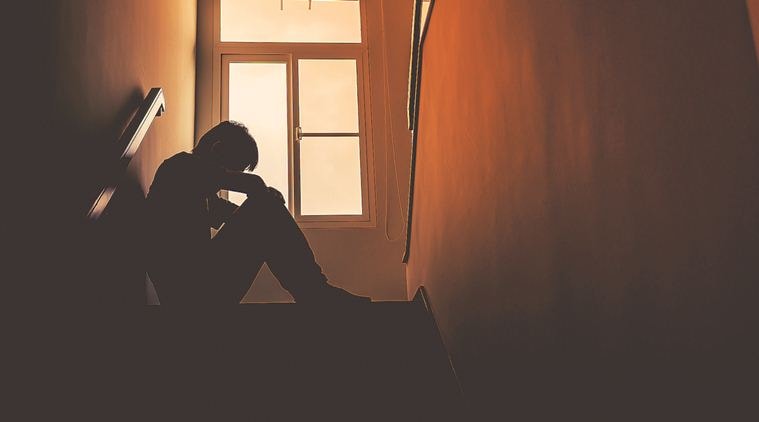 Mental health — everything that it implied — didn’t have much of a presence in my school. (Source: Getty Images)
Mental health — everything that it implied — didn’t have much of a presence in my school. (Source: Getty Images)
It begins when it feels like your heart is about to explode when your name is called in the classroom. Or, perhaps, right before a school play, you find yourself buckling down, gasping for air. A thousand ants form a straight line and march around furiously in your stomach a day before an important exam. You can do nothing but wait listlessly for them to stop.
For me, it was all of these experiences and more. Perhaps, the only thing worse than living through those moments again and again was the inability to put names to those intense emotions. How could I make someone on the outside understand the seething commotion I was feeling? To know that what I was going through was as real as the air I breathed, but being unable to express it beyond words that were both lacking and inaccurate. I remember feeling terrible because of my inability to express my mental health as something more than a figment of my imagination. How could I explain what I was going through, knowing that I didn’t have the right vocabulary, without being ridiculed as “crazy”?
Mental health — everything that it implied — didn’t have much of a presence in my school. “Kirukku”, we would giggle, the catchall Tamil word for “mentally unsound”, on the rare occasion that the topic did come up. There were days when a classmate would enthrall an audience during the lunch-hour break, talking in a whisper about how a priest had come to visit a “crazy” relative — pointing his finger to his forehead and tracing a circle in the universal sign for “insanity” — to perform an exorcism.
I was always equal parts fascinated and terrified by the declaration — absorbed by what seemed like a glimpse into an alien world, and scared witless that I too might be subjected to the same treatment. We spoke of heart attacks, stomach aches and possession by evil spirits because that was the closest we were ever able to get to addressing one’s mental well-being. I didn’t know it at the time, but every single schoolmate I spoke to about my mental health, and who, in turn, spoke to me about theirs, were experiencing the power of words in a different way — by their absence.
Lacking the correct vocabulary can lead to another problem: a misdiagnosis. A close friend confided in me earlier this year that she was constantly called an attention-seeking child when she was indeed displaying suicidal symptoms and had borderline personality disorder. It was only much later in her life that she found out that she had Complex PTSD (C-Ptsd) as a result of childhood trauma, and not Paranoid Personality Disorder, as she was originally diagnosed. Misdiagnosis can lead to incorrect treatment and difficulties in adjusting to social settings. Being able to walk up to a therapist with the right vocabulary to explain her symptoms changed that diagnosis, and, as an immediate consequence, helped her find a more stable life.
Words, then, have power. There isn’t much that the right word can’t accomplish in the right context. A friend recently used the term “neurodivergents” to describe people suffering from mental health disorders. I was surprised by the sheer happiness he felt in finding a term which, in his eyes, represented his condition accurately and without stigma. This is precisely why every language must have the right mental health vocabulary, one which permeates all spaces of that society, including mass media, to erase such prejudice and encourage more conversations.
It was in college, with psychology as one of my three majors, that I gained access to a whole new world. It wasn’t just about learning a handful of words, but about gaining a whole new vocabulary — one which allowed me to name what had until then been a spectre. It was, perhaps, one of my most empowering episodes in college, one which left me with an acute awareness of just how important the right vocabulary could be.
Even as I delved deeper into the field of mental health, I realised just how few had access to this vocabulary. If one didn’t have access to urban spaces, their chances were low. If they didn’t have a reasonable command of the English language, their odds became non-existent. By that point, a few essential terms had become part of English mainstream culture, and would come up in TV series or movies. The same, however, could not be said of Indian regional languages. This was never more evident than when I tried to converse with an acquaintance in my hometown, Nagercoil. Forced to speak exclusively in Tamil, I realised that I had no equivalent in my mother tongue for words such as “anxiety”, “depression” or “BPD”. I found it a struggle, having to regress to narrow descriptions of those conditions in the hope of describing a physical symptom that the other person might find familiar.
This is, perhaps, one of the key reasons why conversations around mental health are largely restricted to urban spaces. While many regional languages have, by now, developed terminologies for mental health conditions, they have been mostly restricted to medical and academic circles. The process of putting a name to the formless is, therefore, a crucial first step on the road to mental wellness. It is by identifying something that people become open to the possibility of talking about it and seeking help for it. Names are the bridge between us and the unknown. After all, as the cat said in Neil Gaiman’s Coraline, “…you people have names. That’s because you don’t know who you are. We know who we are, so we don’t need names.”